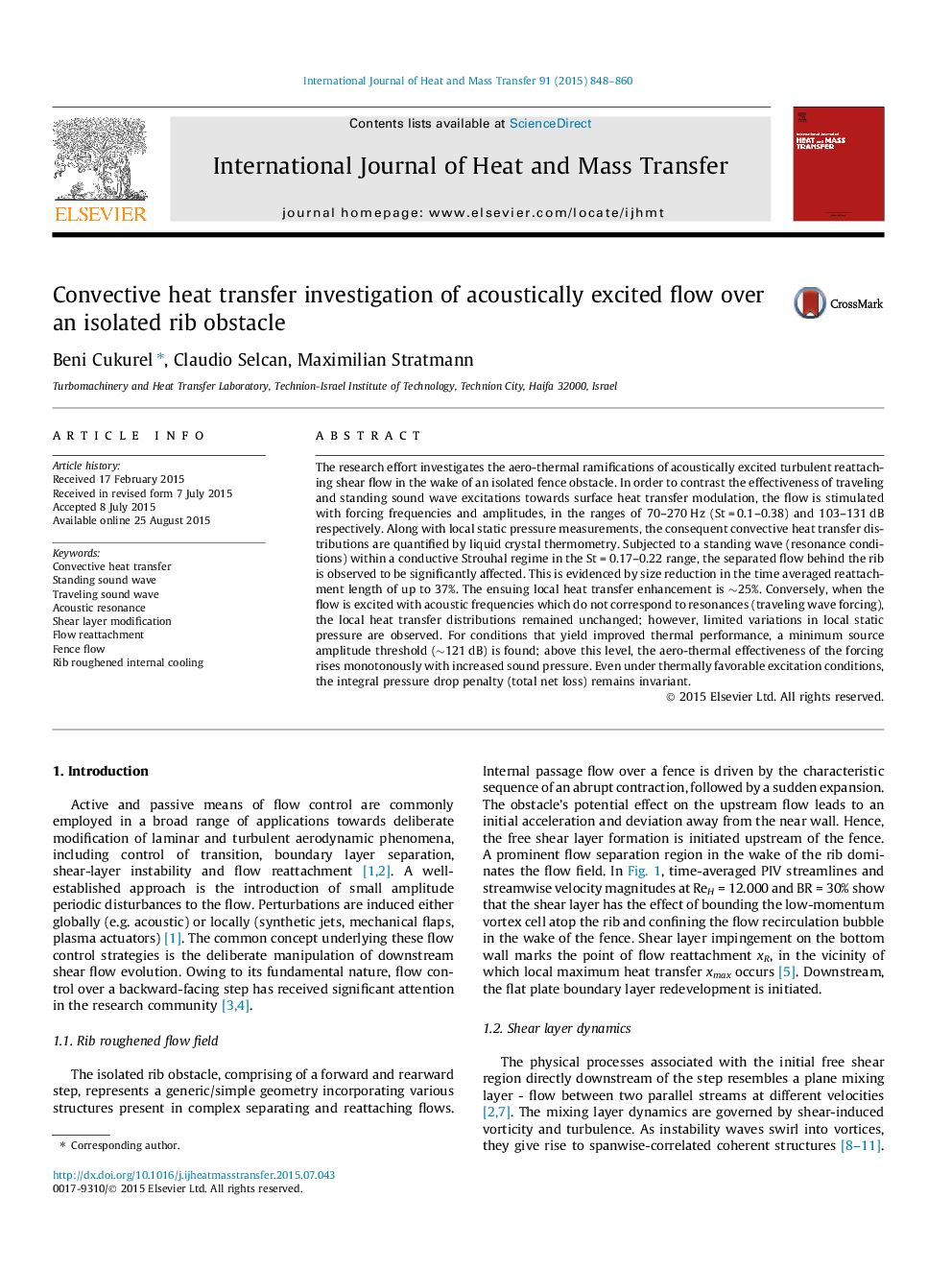| Article ID | Journal | Published Year | Pages | File Type |
|---|---|---|---|---|
| 7056421 | International Journal of Heat and Mass Transfer | 2015 | 13 Pages |
Abstract
The research effort investigates the aero-thermal ramifications of acoustically excited turbulent reattaching shear flow in the wake of an isolated fence obstacle. In order to contrast the effectiveness of traveling and standing sound wave excitations towards surface heat transfer modulation, the flow is stimulated with forcing frequencies and amplitudes, in the ranges of 70-270 Hz (St = 0.1-0.38) and 103-131 dB respectively. Along with local static pressure measurements, the consequent convective heat transfer distributions are quantified by liquid crystal thermometry. Subjected to a standing wave (resonance conditions) within a conductive Strouhal regime in the St = 0.17-0.22 range, the separated flow behind the rib is observed to be significantly affected. This is evidenced by size reduction in the time averaged reattachment length of up to 37%. The ensuing local heat transfer enhancement is â¼25%. Conversely, when the flow is excited with acoustic frequencies which do not correspond to resonances (traveling wave forcing), the local heat transfer distributions remained unchanged; however, limited variations in local static pressure are observed. For conditions that yield improved thermal performance, a minimum source amplitude threshold (â¼121 dB) is found; above this level, the aero-thermal effectiveness of the forcing rises monotonously with increased sound pressure. Even under thermally favorable excitation conditions, the integral pressure drop penalty (total net loss) remains invariant.
Related Topics
Physical Sciences and Engineering
Chemical Engineering
Fluid Flow and Transfer Processes
Authors
Beni Cukurel, Claudio Selcan, Maximilian Stratmann,
